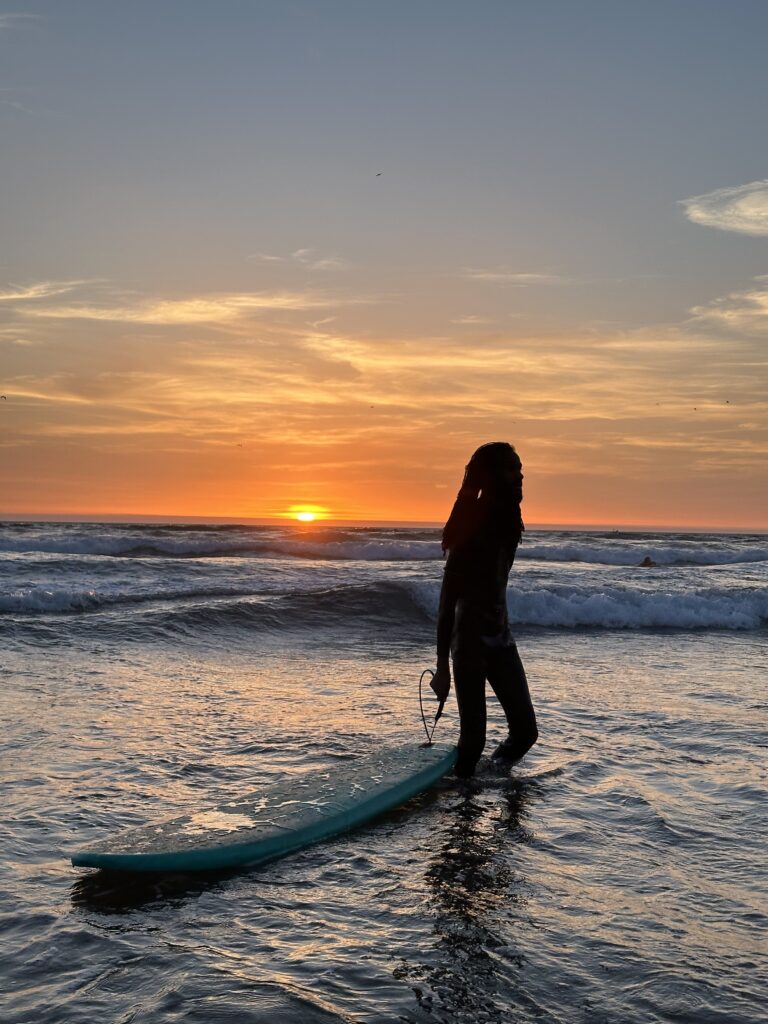SURF THAT FIRST WAVE
Catching That First Wave: A Beginner’s Guide to Surfing
There’s nothing quite like the exhilarating feeling of catching your very first wave. For those who have always dreamed of surfing, that magical moment when you stand on your board and glide across the water is a rush like no other. But how do you get there? Surfing may seem daunting at first, but with the right mindset, technique, and guidance, anyone can catch that first wave and start their surfing journey.
Preparing for Your First Wave
Surfing requires patience, practice, and determination. Before you hit the water, it’s important to prepare both mentally and physically for the challenge ahead. Here are some tips to get you started:
1. Choose the Right Surfboard
For beginners, a larger, more stable surfboard is key. A soft-top board between 8 to 9 feet in length provides more buoyancy, making it easier to paddle, balance, and catch small waves. Soft-top boards are also more forgiving when you inevitably fall, which is bound to happen as you learn.
2. Find the Right Spot
Not all surf spots are suitable for beginners. When you’re starting out, look for a sandy beach with small, gentle waves. In places like Anza, Agadir, there are perfect spots for beginner surfers where the waves are more mellow, allowing you to practice without the pressure of fast, aggressive breaks. Always avoid crowded spots or surf breaks with experienced surfers, as it can be overwhelming and potentially dangerous.
3. Learn Surf Etiquette
Before you paddle out, it’s essential to know the basics of surf etiquette. Respect other surfers’ space, wait your turn, and always be aware of your surroundings. Knowing the right of way and understanding how to avoid collisions will keep you safe and help you blend in with the surfing community.
4. Warm Up
Surfing is a physically demanding activity that requires strength, endurance, and flexibility. A good warm-up, including stretches and mobility exercises, will prepare your muscles and joints for the movement patterns of surfing. Take a few minutes to stretch your arms, legs, and core before paddling out to avoid injury.
The Process: Catching Your First Wave
Once you’re equipped and ready, it’s time to hit the water! Here’s a step-by-step guide to help you successfully catch your first wave:
1. Paddle Out to the Lineup
Start by lying flat on your surfboard and paddling out past the breaking waves to reach the lineup, where you can wait for incoming waves. Use steady strokes and keep your body balanced on the board to avoid tipping over. As you paddle, keep an eye on the waves behind you and stay aware of other surfers.
2. Watch for the Right Wave
Beginner surfers should focus on catching small, white-water waves—the foamy part of a wave that has already broken. These waves are easier to ride and give you more time to practice standing up. When you see a wave approaching, turn your board toward the shore and get ready to paddle.
3. Paddle and Position Yourself
When the wave gets closer, start paddling hard and fast. Your goal is to match the speed of the wave so that it can carry you forward. As the wave lifts the back of your board, you’ll feel the momentum pulling you along. This is when you prepare to stand up.
4. Pop Up
As soon as you feel the wave carrying you, it’s time to pop up! From a prone position, place your hands flat on the board near your chest and push yourself up quickly, jumping into a low, balanced stance. Make sure your feet are positioned in the middle of the board—one foot slightly in front of the other. Bend your knees and keep your weight centered.
5. Ride the Wave
Congratulations! You’re standing on your board and riding your first wave. Keep your knees bent, arms out for balance, and eyes focused on where you’re going. It might feel a bit wobbly at first, but with practice, you’ll get more comfortable. Enjoy the feeling of gliding across the water and don’t worry if you fall—just paddle back out and try again.
Tips for Success
- Stay relaxed: Tension in your body makes it harder to balance. Stay loose, breathe, and take it one wave at a time.
- Practice your pop-up on land: If you’re having trouble standing up on the board, practice your pop-up technique on dry land. The more you practice, the easier it will be in the water.
- Be patient: Surfing is a learning process, and it may take a few tries before you successfully ride a wave. Don’t get discouraged—every attempt brings you one step closer to mastery.
- Take a lesson: A surf instructor can provide valuable tips and help you avoid common mistakes. At Surf Territory, we offer beginner lessons with experienced instructors who will guide you through the entire process and help you catch your first wave safely.
The Thrill of the First Ride
There’s no feeling quite like catching that first wave. It’s a moment of pure exhilaration as you connect with the power of the ocean and glide effortlessly across the water. For many, that first ride is the beginning of a lifelong love affair with surfing. It’s not just about the sport—it’s about the sense of freedom, the connection with nature, and the sheer joy of riding waves.
Ready to Catch Your First Wave?
If you’re ready to experience the thrill of surfing for the first time, Surf Territory in Agadir is the perfect place to start. We offer tailored surf lessons for all skill levels, from complete beginners to advanced surfers. With professional instructors, top-quality equipment, and beautiful beaches, you’ll be riding your first wave in no time.


0 Comments